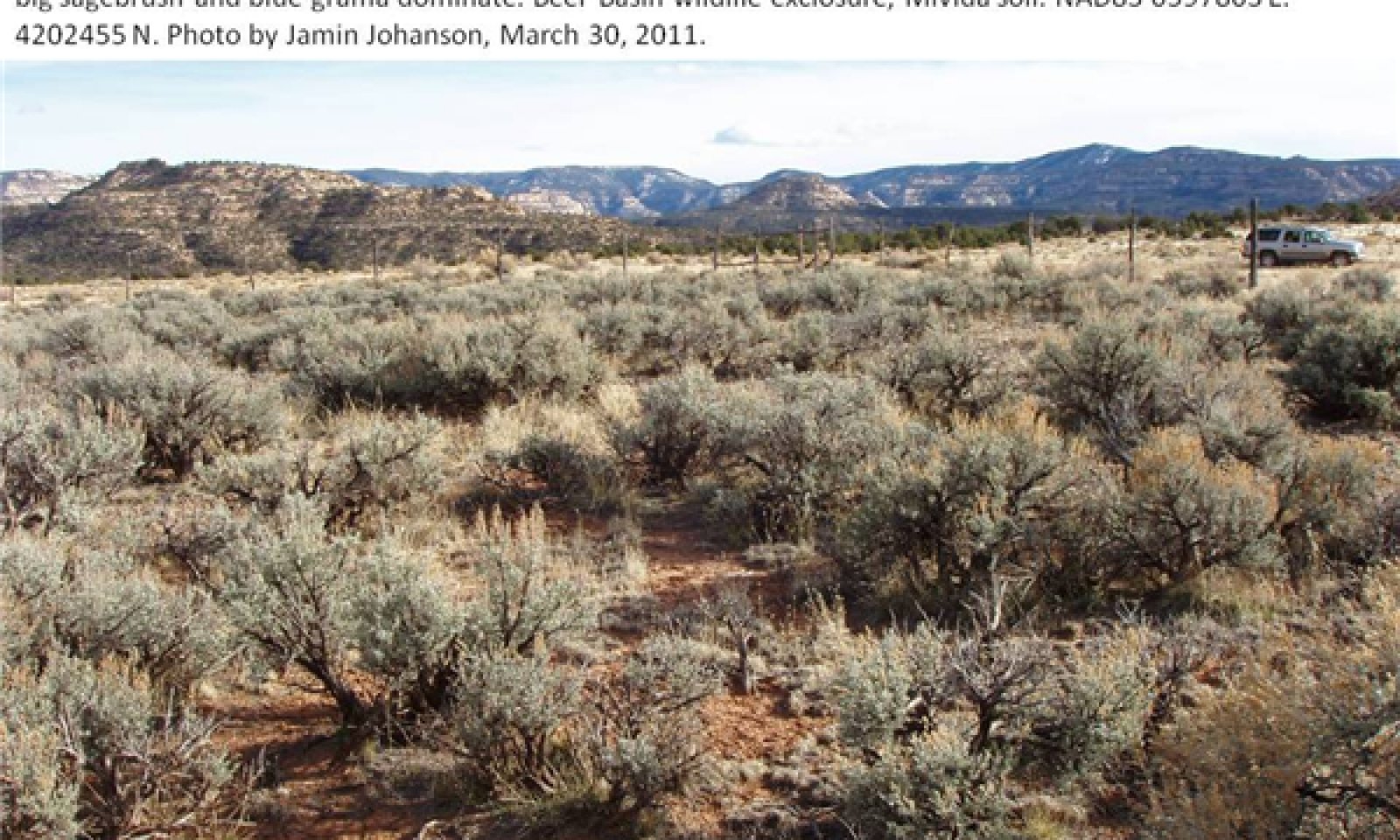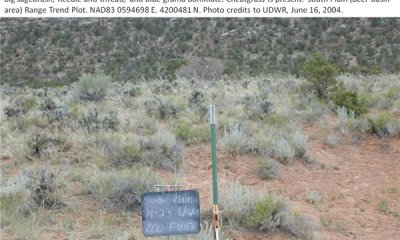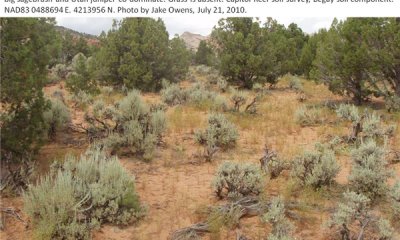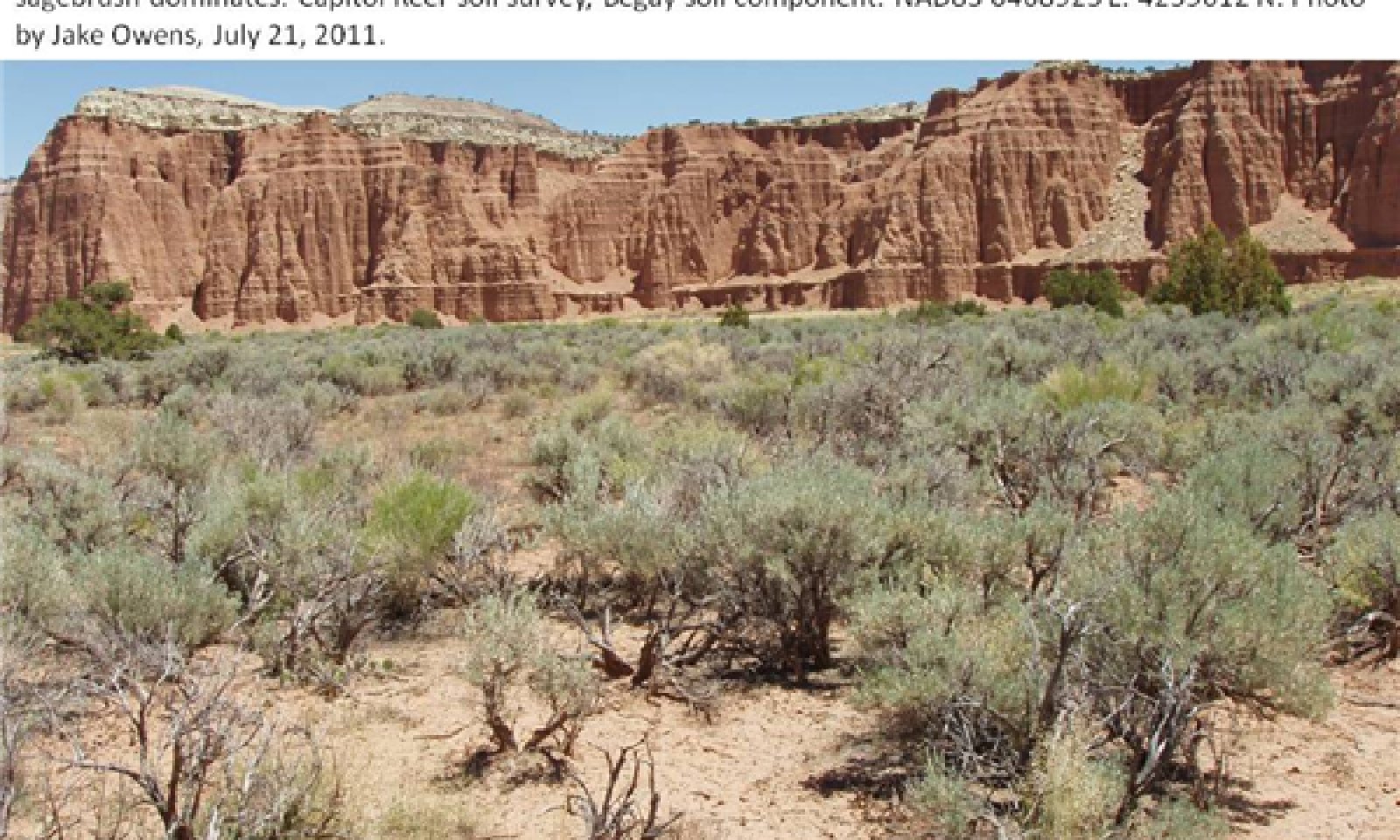
Semidesert Sandy Loam (Wyoming Big Sagebrush)
Scenario model
Current ecosystem state
Select a state
Management practices/drivers
Select a transition or restoration pathway
- Transition T1a More details
- Transition T2a More details
- Transition T2b More details
- Transition T3a More details
-
No transition or restoration pathway between the selected states has been described
Target ecosystem state
Select a state
Description
The reference state contains plant communities presumed to occur prior to the introduction of non-native plants, livestock grazing, and other modern disturbances. Wyoming big sagebrush dominance depends on time since fire, winter browsing, aroga moth, and/or extended drought. Utah juniper may occur as a minor component of the plant community and is removed by fire prior to maturity.
Submodel
Description
The Current Potential state is similar to the Reference state in composition and ecological function, but allows for non-native species to be present. During wet periods, non-native invasive annuals, particularly cheatgrass, may increase temporarily in the community, but they decrease in abundance during average or dry periods.
This state also includes an at-risk plant community with juniper encroachment that occurs when lack of fire extends beyond the 40-50 year fire return interval. When juniper approaches co-dominance with Wyoming big sagebrush, phase 2.3 is at-risk of transitioning to the Juniper state.
Similarly, when perennial grasses are losing vigor and the ability to propagate themselves, this state is at risk of transitioning to the depleted understory state, which is incapable of recovering perennial grasses without significant management inputs. Phases 2.1 and 2.3 are both susceptible to this transition.
Submodel
Description
The depleted understory state occurs when perennial grasses lose vigor and are unable to reproduce-they are essentially absent from the understory. Improper livestock grazing can accelerate this transition. Perennial forbs may also be reduced. This state is not as capable of carrying a stand replacing fire that removes big sagebrush due to a reduction in fine fules. As a result, sagebrush continues to increase and the understory continues to be reduced.
Submodel
Description
This state occurs when perennial grasses become too sparse to produce sufficient seed to regain dominance after fire or tree removal. Shrubs also decrease or disappear from the community and are unable to return naturally following tree removal. It is unknown whether this state accelerates erosion, but soil fertility is expected to decline as this state persists, due to a lack of fine root turnover and other organic matter inputs usually associated with sagebrush grasslands.
Submodel
Mechanism
This transition is the result of establishment by invasive species. Modern disturbances such as recreation and livestock grazing may accelerate this transition by providing seed sources and germination sites for non-native species. However, the two primary invaders on this site, cheatgrass and redstem storksbill, can establish in the absence of major disturbance.
Mechanism
This transition occurs when perennial grasses are reduced by improper grazing to the point that they can no longer self-propagate. Few remnant plants may still persist under shrubs, but re-establishment and dominance by perennial grasses will not occur following a fire, or with the removal of livestock grazing.
Mechanism
This transition occurs when juniper and shrub co-dominate. They may preclude sufficient reproduction by perennial grasses. Fire suppression, improper livestock grazing, or other disturbances that reduce the vigor of perrenial grasses can accelerate this transition. The threshold is the point where perennial grasses can no longer re-establish themselves following fire, herbicide, or other disturbance that removes woody species. Utah juniper is increasing in the community and becomes co-dominant with sagebrush.
Model keys
Briefcase
Add ecological sites and Major Land Resource Areas to your briefcase by clicking on the briefcase (![]() ) icon wherever it occurs. Drag and drop items to reorder. Cookies are used to store briefcase items between browsing sessions. Because of this, the number of items that can be added to your briefcase is limited, and briefcase items added on one device and browser cannot be accessed from another device or browser. Users who do not wish to place cookies on their devices should not use the briefcase tool. Briefcase cookies serve no other purpose than described here and are deleted whenever browsing history is cleared.
) icon wherever it occurs. Drag and drop items to reorder. Cookies are used to store briefcase items between browsing sessions. Because of this, the number of items that can be added to your briefcase is limited, and briefcase items added on one device and browser cannot be accessed from another device or browser. Users who do not wish to place cookies on their devices should not use the briefcase tool. Briefcase cookies serve no other purpose than described here and are deleted whenever browsing history is cleared.
Ecological sites
Major Land Resource Areas
The Ecosystem Dynamics Interpretive Tool is an information system framework developed by the USDA-ARS Jornada Experimental Range, USDA Natural Resources Conservation Service, and New Mexico State University.













